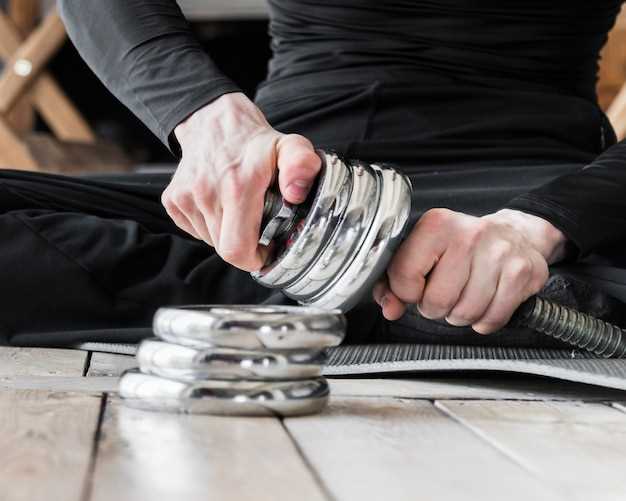
The transmission mount is a critical component of your vehicle’s drivetrain, playing a key role in securing the transmission in place and absorbing vibrations during operation. Over time, this mount can wear out due to the constant stress and strains from engine movements, leading to noticeable symptoms such as excessive vibration and difficulty in shifting gears.
Recognizing the signs of a worn transmission mount is essential for maintaining your vehicle’s performance. If you experience unusual vibrations while driving, it may indicate that the mount has deteriorated, causing misalignment in the transmission. Addressing these issues promptly can prevent further damage to the transmission and ensure a smoother driving experience.
In this guide, we will walk you through the process of replacing a worn transmission mount. From identifying the right mount for your vehicle to the step-by-step replacement procedure, our comprehensive approach will equip you with the knowledge necessary to tackle this important maintenance task with confidence.
Identifying Symptoms of a Worn Transmission Mount

A worn transmission mount can lead to various issues that impact the vehicle’s performance and comfort. Identifying these symptoms early can help prevent further damage and ensure a smoother driving experience. Below are some key signs to look for:
- Excessive Vibration: One of the most noticeable symptoms is increased vibration felt throughout the vehicle. If you notice unusual shaking, especially during acceleration or shifting gears, it may indicate a failing transmission mount.
- Abnormal Noises: Listen for clunking or banging sounds coming from the transmission area. These noises often result from the transmission moving excessively due to a worn mount, leading to metal-on-metal contact.
- Transmission Misalignment: A worn mount may cause misalignment of the transmission. If you feel that the gear shifter is not engaging smoothly or is loose, this could be an indication of a faulty mount.
- Increased Transmission Movement: Start the vehicle and watch the transmission while someone else shifts through the gears. If you notice excessive movement or shifting of the transmission assembly, it is likely due to a worn mount that needs to be fixed.
- Difficulty in Gear Shifting: You may find it hard to shift gears or experience grinding sounds while doing so. A transmission mount that no longer provides adequate support can affect the entire shifting mechanism.
If you observe any of these symptoms, it’s crucial to assess the condition of your transmission mount. Addressing these issues promptly can save you from more extensive repairs down the road.
Tools Required for Transmission Mount Replacement
Replacing a worn transmission mount is essential to reduce vibration and ensure the smooth operation of your vehicle. To accomplish this task, you will need a specific set of tools to aid in the proper installation and removal of the mount.
1. Socket Set: A comprehensive socket set is crucial for loosening and tightening the bolts that secure the mount in place. You’ll typically need various sizes, including both metric and standard options, depending on your vehicle model.
2. Ratchet Wrench: A ratchet wrench allows for quick and efficient removal of bolts without the need to reposition the tool constantly. This increases efficiency when working in tight spaces.
3. Torque Wrench: Ensuring that the bolts are tightened to the manufacturer’s specifications is vital for stability. A torque wrench helps you achieve the precise tightness, preventing potential issues later.
4. Pry Bar: A pry bar can assist in removing the old mount if it’s stuck or has any adhesive. This tool provides leverage to help you dislodge the worn mount without damaging surrounding components.
5. Jack and Jack Stands: Lifting the vehicle using a jack and securing it with jack stands is necessary for safely accessing the transmission mount. Ensure the vehicle is stable throughout the process to avoid accidents.
6. Vibration Dampening Tool: A vibration dampening tool may not be a standard item but can help in assessing the effectiveness of the new mount once installed. This tool can help you monitor any remaining vibration issues after replacement.
7. Safety Gear: Safety goggles and gloves should not be overlooked. Protecting your eyes and hands will help you work safely, especially when dealing with heavy parts and tools that can cause injuries.
By gathering these tools before starting your project, you can ensure a smoother and more efficient replacement of your transmission mount, effectively fixing the issues caused by vibration and securing the overall integrity of your vehicle’s performance.
Step-by-Step Process for Removing the Old Mount
Removing a worn transmission mount is essential for fixing vibrations that can affect vehicle performance. Follow these steps carefully to ensure a smooth removal process.
Step 1: Prepare Your Tools
Gather necessary tools, including a socket set, wrenches, and a jack. Ensure you have safety glasses and gloves to protect yourself during the procedure.
Step 2: Lift the Vehicle
Using the jack, lift the vehicle and secure it on jack stands. Ensure the vehicle is stable before proceeding. This step is crucial for safely accessing the mount.
Step 3: Locate the Transmission Mount
Identify the old mount beneath the transmission. It typically connects the transmission to the vehicle’s frame. Take note of its position and any connecting bolts.
Step 4: Remove Connecting Components
Using the appropriate socket or wrench, carefully loosen and remove the bolts securing the mount. Keep track of all hardware, as you’ll need them for the installation of the new mount.
Step 5: Support the Transmission
If necessary, provide additional support to the transmission with a jack or brace to prevent it from dropping unexpectedly during the mount removal.
Step 6: Disconnect the Old Mount
Once the bolts are removed, gently pry the old mount from its position. Be cautious, as the mount may be stuck due to age or corrosion. A slight tap with a hammer can help if needed.
Step 7: Inspect Surrounding Areas
After removal, inspect the area around the mount for any signs of wear or damage. This inspection is critical to address any potential issues before installing the new mount.
Step 8: Clean the Mounting Surface
Ensure that the surface where the new mount will sit is clean and free of debris. This preparation will help in achieving a secure fit once the new mount is installed.
Following these steps will make the process of removing an old transmission mount easier and more efficient, leading to a successful replacement and improved vehicle performance.
Installing the New Transmission Mount Correctly
Proper installation of a new transmission mount is crucial for ensuring optimal performance and minimizing vibration in your vehicle. Follow these steps to ensure the mount is installed correctly.
Before starting the installation, gather all necessary tools, including a socket set, wrench, and torque wrench. Make sure the vehicle is on a level surface and secure it with wheel chocks to prevent any movement.
Begin the process by lifting the transmission slightly with a jack. This will relieve pressure on the existing mount and make it easier to remove. Once the old mount is detached, ensure that the area is clean and there are no remnants of the old rubber or debris that might interfere with the new installation.
When positioning the new mount, align it carefully with the existing mounting points. It’s important to ensure that the new mount fits snugly and that the holes line up correctly. Misalignment can lead to uneven wear and increased vibration during operation.
After placing the mount, hand-tighten the bolts to secure it in place. This will allow for slight adjustments if necessary. Once the mount is correctly positioned, use a torque wrench to tighten the bolts to the manufacturer’s specified torque settings.
Finally, lower the transmission and double-check all fastenings. Start the engine and observe any vibrations. If vibrations persist, confirm that all mounts are secure and that the new transmission mount is correctly aligned.
| Step | Description |
|---|---|
| 1 | Lift the transmission with a jack. |
| 2 | Remove the old mount and clean the area. |
| 3 | Align the new mount with the mounting points. |
| 4 | Hand-tighten the bolts to secure the mount. |
| 5 | Torque bolts to specifications. |
| 6 | Lower the transmission and verify installation. |
By following these steps diligently, you can ensure the new transmission mount is installed correctly, which will help eliminate excess vibration and improve overall driving comfort.
Testing for Vibration After Installation

After completing the replacement of the transmission mount, it is crucial to test for any vibrations that may indicate improper installation or issues with the new mount. Addressing vibration problems promptly can prevent further damage to the transmission or related components.
To begin testing, start the vehicle and allow it to reach normal operating temperature. While stationary, place the vehicle in gear and observe the engine. Pay close attention to the transmission area for any unusual movement or vibrations. If you notice excessive shaking, this may signal that the mount has not been properly secured or is faulty.
Next, perform a road test. Take the vehicle for a short drive, ideally on various surfaces and at different speeds. During this test, monitor how the vehicle responds to acceleration and deceleration. Listen for any noises or feel for vibrations that might become apparent during driving. A well-installed mount should minimize vibrations, providing a smoother ride.
If vibrations persist, check the installation of the mount again. Ensure that all bolts are tightened to the manufacturer’s specifications and that the mount is aligned correctly. A misaligned transmission mount can lead to increased wear on the transmission and ultimately require a fix.
In conclusion, testing for vibrations after installing a new transmission mount is essential for ensuring optimal performance and longevity of your vehicle. Regular checks can help identify potential issues before they escalate into more significant problems.
Tips for Preventing Future Transmission Mount Issues
Maintaining your vehicle’s transmission mount is crucial for ensuring a smooth driving experience and preventing costly repairs. Here are some practical tips to help you avoid future issues.
First, regularly inspect your transmission mount for signs of wear or damage. Look for cracks, leaks, or excessive vibration when driving. Early detection of these issues can help you fix problems before they worsen.
Second, ensure that all engine and transmission components are properly aligned. Misalignment can lead to increased stress on the mount, causing it to wear out prematurely. If you notice any unusual noises or vibrations, have your vehicle checked by a professional.
Third, avoid heavy towing or hauling beyond the vehicle’s specifications. Excessive weight can put undue stress on the transmission and its mount, leading to quicker wear. Always adhere to your vehicle’s towing capacity to maintain optimal performance.
Additionally, make a point to regularly change your transmission fluid as recommended by the manufacturer. Clean fluid assists in reducing heat and friction, which can prolong the lifespan of the transmission mount.
Lastly, if you experience persistent vibration issues, address them immediately. Vibration can indicate underlying problems that may lead to transmission mount failure. Ignoring these signs can result in significant damage and costly repairs down the line.










